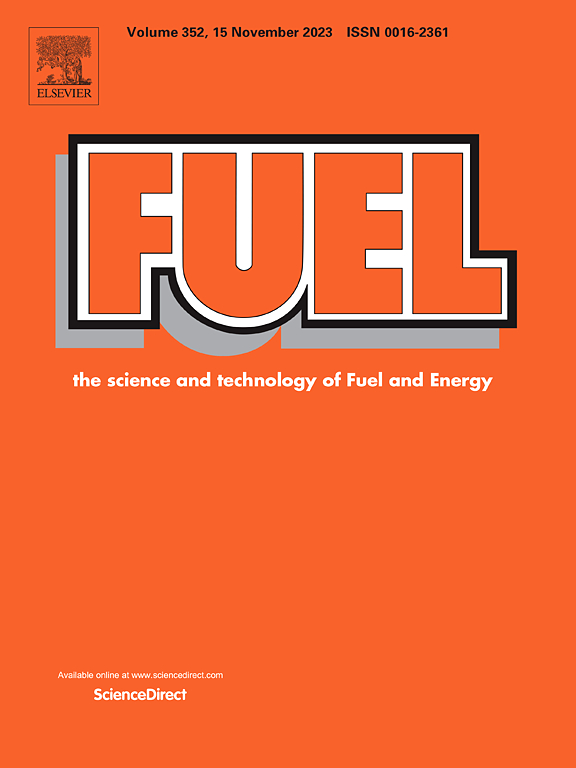Insight into the effect of ammonia doping on the methane jet flame
IF 6.7
1区 工程技术
Q2 ENERGY & FUELS
引用次数: 0
Abstract
Ammonia (NH3) is a carbon-free and high-hydrogen fuel with ease of storage and transport having low energy density, making it a promising alternative fuel. The combustion characteristics of NH3 differ significantly from those of conventional fossil fuels, presenting significant barriers to its applications. Here, the effect of combustion characteristics of NH3 doping with hydrocarbon fuel is investigated by employing Particle image velocimetry (PIV) experiments and CFD Simulation across various ratios of NH3 doped in the premixed jet flame. The experimental findings indicate that NH3 doping leads to a significant increase in flame height (from 5.15 cm to 10.51 cm with NH3 doping), while the maximum flame temperature decreases with NH3 doping (1972 °C to 1895 °C). Nevertheless, the flame temperature increases with flame height increase (1372 °C to 1537 °C) due to the decomposition of NH3 into H2, which combusts rapidly and releases additional heat, accompanied by a broader flame structure and more consistent heat distribution. This altered combustion characteristics and enhanced reactivity of the NH3 hydrocarbon mixture which improves combustion efficiency and heat transfer within the flame zone. Additionally, the overall flame velocity decreased with NH3 doping (7.13 m/s to 6.58 m/s), and higher velocities were observed in the upper flame regions due to an increased flame height. These results reveal that NH3 doping enhances flame stability, facilitates complete combustion, and amplifies the understanding of mechanisms involved in NH3 combustion thereby offering a pathway towards cleaner combustion technologies. Consequently, NH3 can be utilized more efficiently in practical combustion devices, including internal combustion engines, aero engines, land-based gas turbines, furnaces, and boilers.
求助全文
约1分钟内获得全文
求助全文
来源期刊

Fuel
工程技术-工程:化工
CiteScore
12.80
自引率
20.30%
发文量
3506
审稿时长
64 days
期刊介绍:
The exploration of energy sources remains a critical matter of study. For the past nine decades, fuel has consistently held the forefront in primary research efforts within the field of energy science. This area of investigation encompasses a wide range of subjects, with a particular emphasis on emerging concerns like environmental factors and pollution.
 求助内容:
求助内容: 应助结果提醒方式:
应助结果提醒方式:


